Recently, a bizarre question took hold of social media: Could 100 men take on a gorilla in a fight? What…
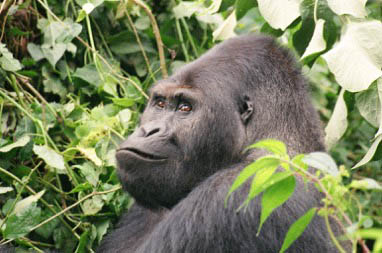
In December 2024, a five-month-old baby gorilla, now named Zeytin, was rescued from a Turkish Airlines flight travelling Nigeria to Thailand. Discovered in a box in the cargo hold, Zeytin endured a traumatic journey but is now under expert care and recovering well.
Since being rescued, the baby’s rehabilitation has been coordinated by Istanbul Nature Conservation and National Parks. Regional director, Fahrettin Ulu, told the Associated Press “Of course, what we want and desire is for the baby gorilla to continue its life in its homeland. What is important is that an absolutely safe environment is established in the place it goes to, which is extremely important for us.” Since the rescue, Zeytin is receiving the medical care and attention she needs.
Zeytin’s story is an important reminder of the challenges gorillas face globally due to many challenges, such as habitat loss, poaching and illegal trafficking. The endangered species are essential to their ecosystems, and yet, they remain under constant threat.
As a gorilla conservation organisation, we commend all those involved in the rescue and rehabilitation for their dedication to Zeytin’s welfare. We echo Fahrettin Ulu’s call for establishing secure habitats were vulnerable animals like Zeytin can receive the care they need. We hope her story will inspire continued action against wildlife trafficking and our wider vision to conserve gorillas for generations to come.
You can read the full story here

Recently, a bizarre question took hold of social media: Could 100 men take on a gorilla in a fight? What…

On 27 April 2025, Sonam Modhwadia took on the legendary TCS London Marathon, running every mile with purpose, in support…

A surge in Mpox cases across the Democratic Republic of the Congo has triggered an urgent conservation response to protect…
Trees hold incredible potential- they provide resources, help fight climate change, offer food and, bring people together!
In mid-October 2024, we organized the planting of 10,500 trees near Mgahinga Gorilla National Park, and it turned into a heartwarming community event. Beneficiaries from all our local projects joined in, including farmers from KDFA and enthusiastic schoolchildren from our sustainable conservation program.
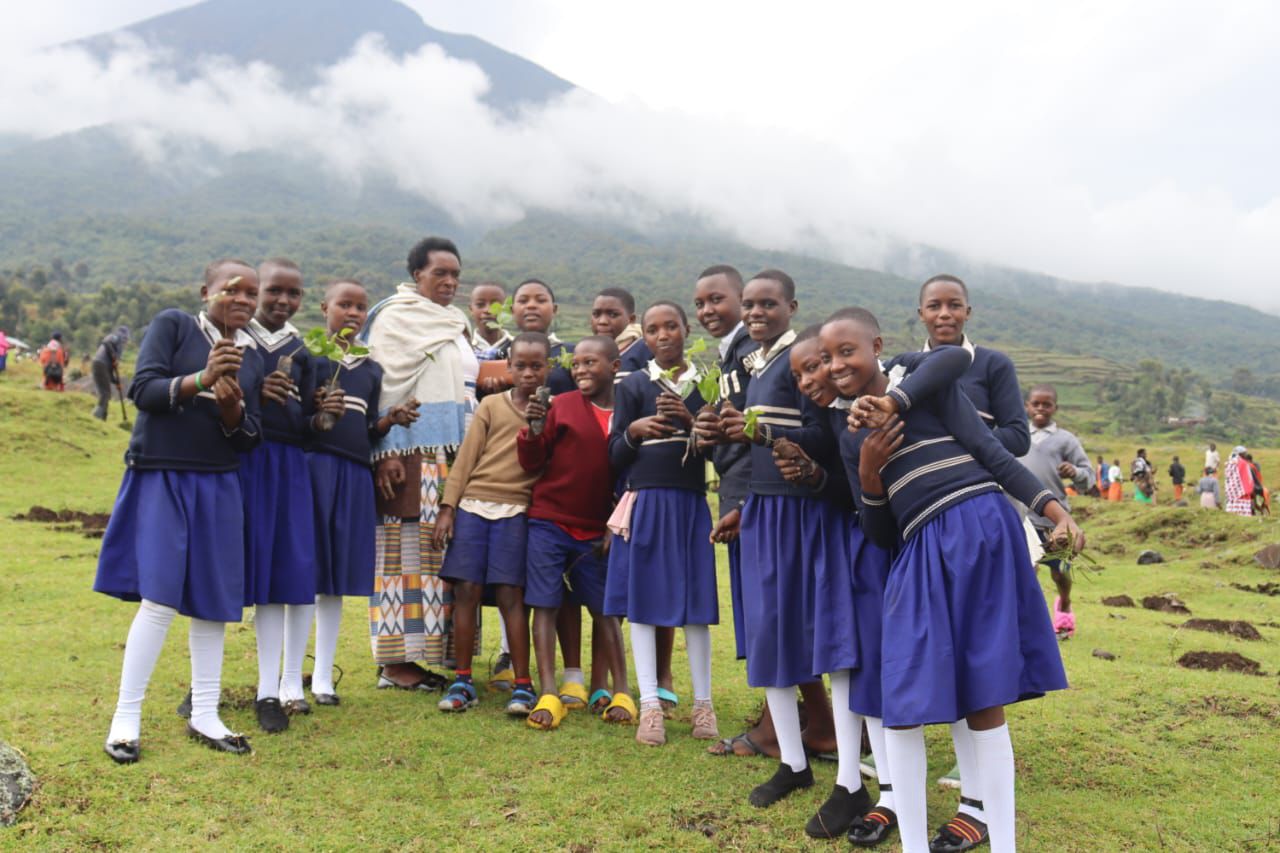
The tree species were carefully chosen to boost biodiversity and offer valuable resources in the future, such as honey, fruit, and firewood. It was wonderful to see everyone pitch in, and the children especially had a fantastic time learning how to plant saplings. It was truly a wonderful day, showing the power of community spirit towards shared goals of gorilla conservation and poverty alleviation.
We can’t wait to watch these saplings grow and thrive in the coming years. Trees are vital to gorilla conservation, offering protection for the mountain gorillas that live in the forest. They create a crucial green buffer around the habitat, shielding the gorillas from external threat. Our reforestation project also helps ease the pressure on gorilla habitats by addressing local needs. Instead of relying on resources from the forest, communities can now access essentials like firewood and fruit—avocado and mango trees are among the ones we’ve planted.
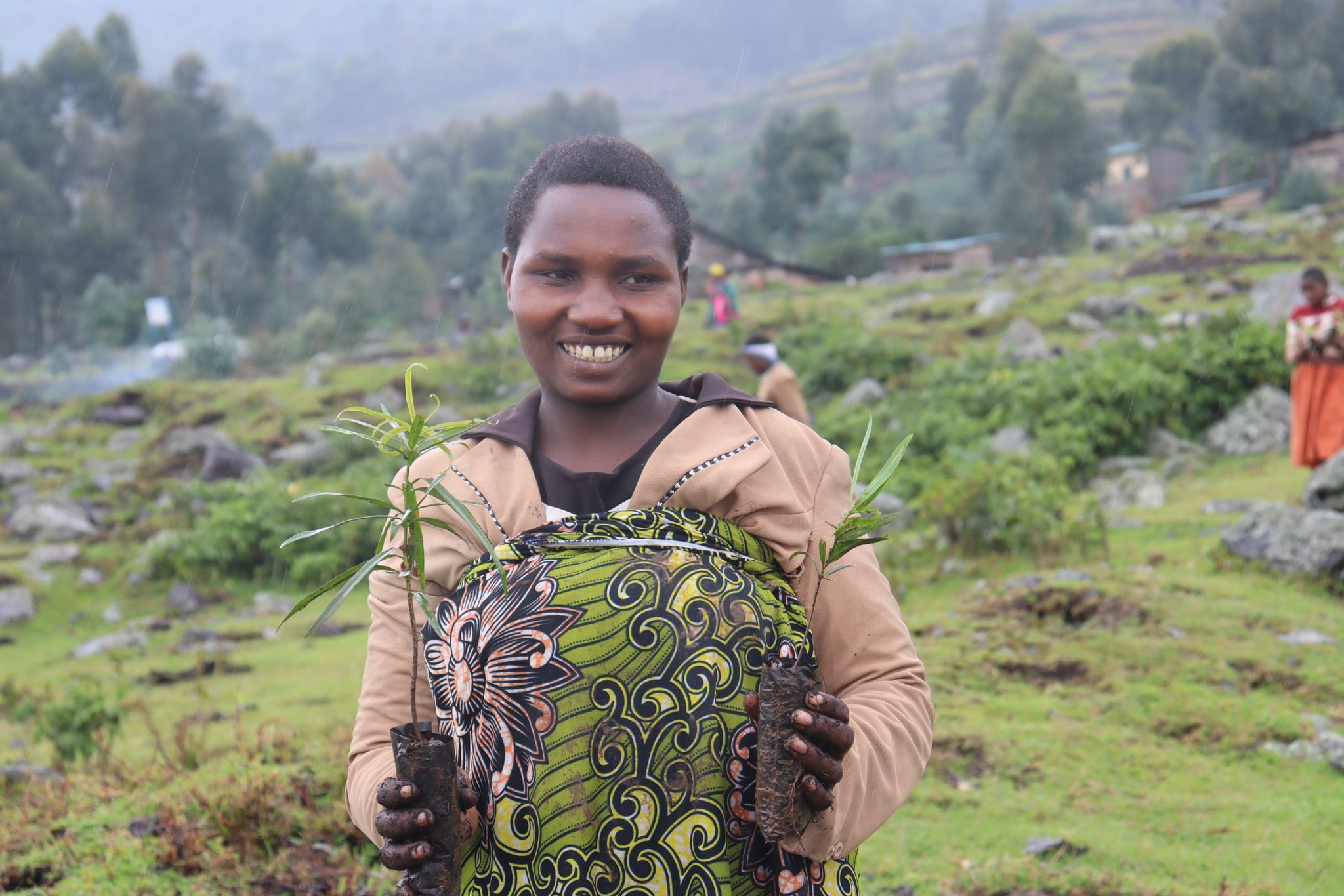
With nearly 2 million trees planted across our reforestation projects in Uganda and the Democratic Republic of Congo, we’re proud to see how trees are transforming landscapes, improving lives, and protecting the gorillas we all care about.
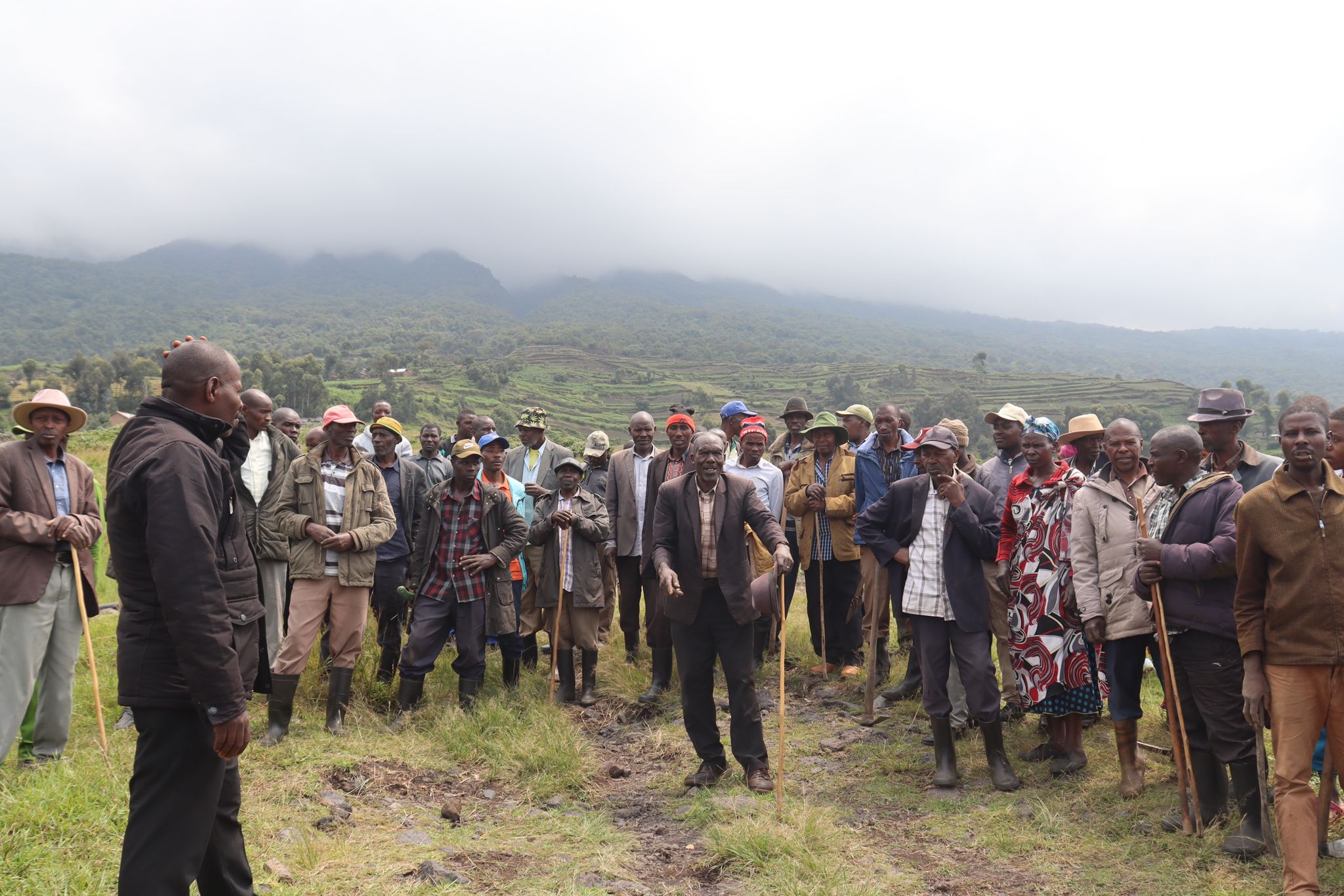

Recently, a bizarre question took hold of social media: Could 100 men take on a gorilla in a fight? What…

On 27 April 2025, Sonam Modhwadia took on the legendary TCS London Marathon, running every mile with purpose, in support…

A surge in Mpox cases across the Democratic Republic of the Congo has triggered an urgent conservation response to protect…
Gorilla Rangers in the Itombwe Nature Reserve Receive Much-Needed Support of 55 Gorilla Boxes
Thanks to the generosity of our supporters, The Gorilla Organization has recently provided essential “gorilla boxes” to rangers working in the Itombwe Nature Reserve in the Eastern Democratic Republic of Congo. These boxes contain vital supplies for rangers’ challenging patrols, and so far, 55 rangers have received them. Their smiles and gratitude say it all—knowing that our supporters stand with them in their mission means so much to these brave conservationists.
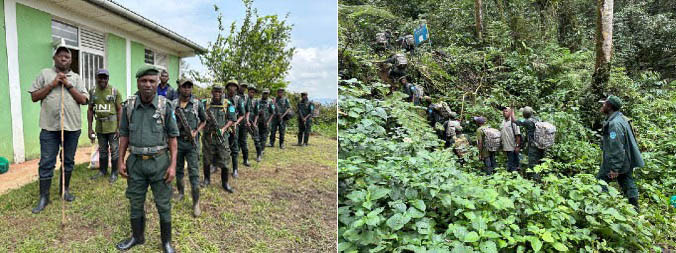
Our dedicated rangers work in one of Africa’s most vast and remote mountain forests, where the magnificent eastern lowland gorillas, or Grauer’s gorillas, reside. These gentle giants are unique to this region, distinguished by their short fur, rounder nostrils, and narrower faces. Itombwe is sadly one of their last safe havens, and it is also home to other endangered species, including elephants, leopards, giant pangolins, and chimpanzees, along with a variety of other rare birds and plants.

Day and night, the rangers patrol the forests, protecting these gentle giants from threats like deforestation, poaching, and political conflict. Their work is physically demanding and often dangerous, as they remove traps, deter militias, and monitor the forest’s wildlife, collecting essential biodiversity data.
This work, as important as it is, is tough, relentless, and at times life-threatening. But these rangers are determined to protect gorillas. That’s why these gorilla boxes have been so impactful. Each box is packed with gear they need: waterproof clothing, sturdy boots, rain shelters, sleeping bags, first aid kits, and flashlights.

Recently, a bizarre question took hold of social media: Could 100 men take on a gorilla in a fight? What…

On 27 April 2025, Sonam Modhwadia took on the legendary TCS London Marathon, running every mile with purpose, in support…

A surge in Mpox cases across the Democratic Republic of the Congo has triggered an urgent conservation response to protect…
Gorillas in the wild have often been observed mixing up their regular diets and eating plants they know have health benefits. But new research suggests that humans can learn a lot from self-medicating great apes, and that gorillas may even hold the key to several medicinal breakthroughs.
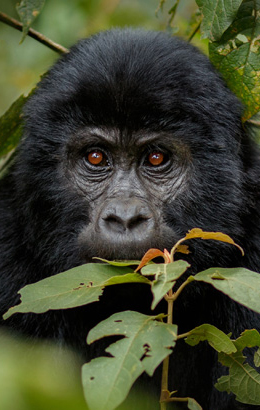
Scientists studying wild western lowland gorillas would see them munching on tree bark, alongside their regular diet of plant shoots, bamboo leaves, fruits and celery. Upon examination, the bark was found to be rich in antioxidants and antimicrobials, meaning that they could be used to develop treatments for a range of ailments humans suffer from. In particular, the plants showed signs of antibacterial activity against at least one multidrug-resistant strain of the bug, E. coli.
The trees and plants examined by the international team of botanists, included fromager tree (Ceiba pentandra), giant yellow mulberry (Myrianthus arboreus), African teak (Milicia excelsa) and fig trees (Ficus). All four of them are used in traditional medicine, both in Gabon where the study took place, and in other parts of Africa.
“This suggests that gorillas evolved to eat plants that benefit them, and highlights the huge gaps in our knowledge of the Central African rainforests,” said Dr Joanna Setchell, an anthropologist at the University of Durham, UK, who worked on the study with Gabonese scientists.
Gorilla Organization Director Jillian Miller adds: “We are only at the edge of our understanding of gorillas. Their relationship with their natural habitat is truly fascinating – which is why it’s so critical we safeguard both for future generations to study, appreciate and enjoy.”
The study was published in the journal PLOS ONE.

Recently, a bizarre question took hold of social media: Could 100 men take on a gorilla in a fight? What…

On 27 April 2025, Sonam Modhwadia took on the legendary TCS London Marathon, running every mile with purpose, in support…

A surge in Mpox cases across the Democratic Republic of the Congo has triggered an urgent conservation response to protect…
Community conservation has always been at the heart of the Gorilla Organization’s work. It’s a recognition that including local people in long term planning is key to building a more resilient future for all species of gorilla.
Such an approach has not always been popular. Indeed, the Gorilla Organization has been a pioneer, moving away from the old top-down approach of wildlife conservation and instead embracing a grassroots model. But it has undoubtedly been effective. And slowly but surely, the global conservation community has shifted to a community-based approach, one key reason why the future may be looking brighter for endangered species everywhere.
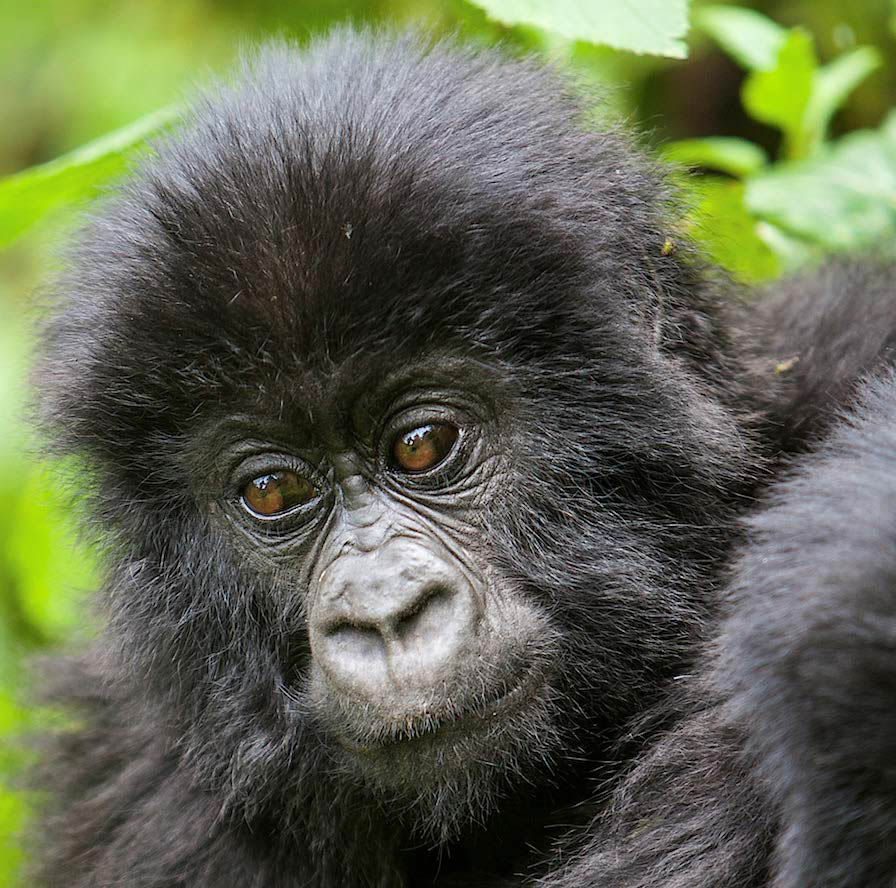
More effective conservation
Signed by the world’s governments just two years ago, the Kunming-Montreal Global Biodiversity Framework aims at reversing biodiversity loss by 2030. Given the alarming decline in lowland gorillas in particular, this goal may seem daunting, even impossible. However, the data shows this inclusive approach is working. A brand-new University of Oxford meta-analysis of almost 200 studies from around the world concluded that “conservation is getting more effective over time”.
Certainly, mountain gorillas have been brought back from the edge of extinction, from fewer than 600 at the start of the millennium to around 1,100 now. But the job is far from done. Even mountain gorillas remain highly vulnerable, at the mercy of poachers and militias, with their habitat shrinking at a rapid rate. Even more at risk are eastern lowland gorillas, classed as one step away from being lost for good. What hope there is lies in frontline, community-led efforts.
The Gorilla Organization continues to lead the way. By taking a ‘whole of family approach’, men are supported as they shift from poaching to more sustainable livelihoods, women are empowered to organize, educate, and run communities without relying on the forests, and children are inspired into action in their schools and homes.
As Director Jillian Miller explains, “We have always worked directly with the communities to find the right balance between keeping gorillas safe and helping people thrive, not just survive. The two go hand-in-hand, and the results speak for themselves: lives are transformed, communities uplifted and the underlying threats facing gorillas undermined and even eradicated.”
This story has been reprinted from Digit News Summer 2024. To download the full issue please click here.

Recently, a bizarre question took hold of social media: Could 100 men take on a gorilla in a fight? What…

On 27 April 2025, Sonam Modhwadia took on the legendary TCS London Marathon, running every mile with purpose, in support…

A surge in Mpox cases across the Democratic Republic of the Congo has triggered an urgent conservation response to protect…
In wildlife conservation, it pays to have an edge. To be one step ahead of poachers – or, indeed, of gorillas.
That’s why, alongside field essentials like sturdy boots and tents, the Gorilla Organization’s intrepid ranger teams are also now equipped with the latest high-tech tools. What’s more, they have the knowledge to put them to good use in the forests of the Congo.
At the Kisimbe-Ikobo Nature Reserve, in remote North Kivu, 25 rangers have been trained in installing and using camera traps. The team has already fixed cameras in the Kira Sector of the reserve, home to a little-seen population of eastern lowland gorillas. This way, they will know where to focus their anti-poaching patrols, while also getting to know more about the unhabituated gorilla groups.
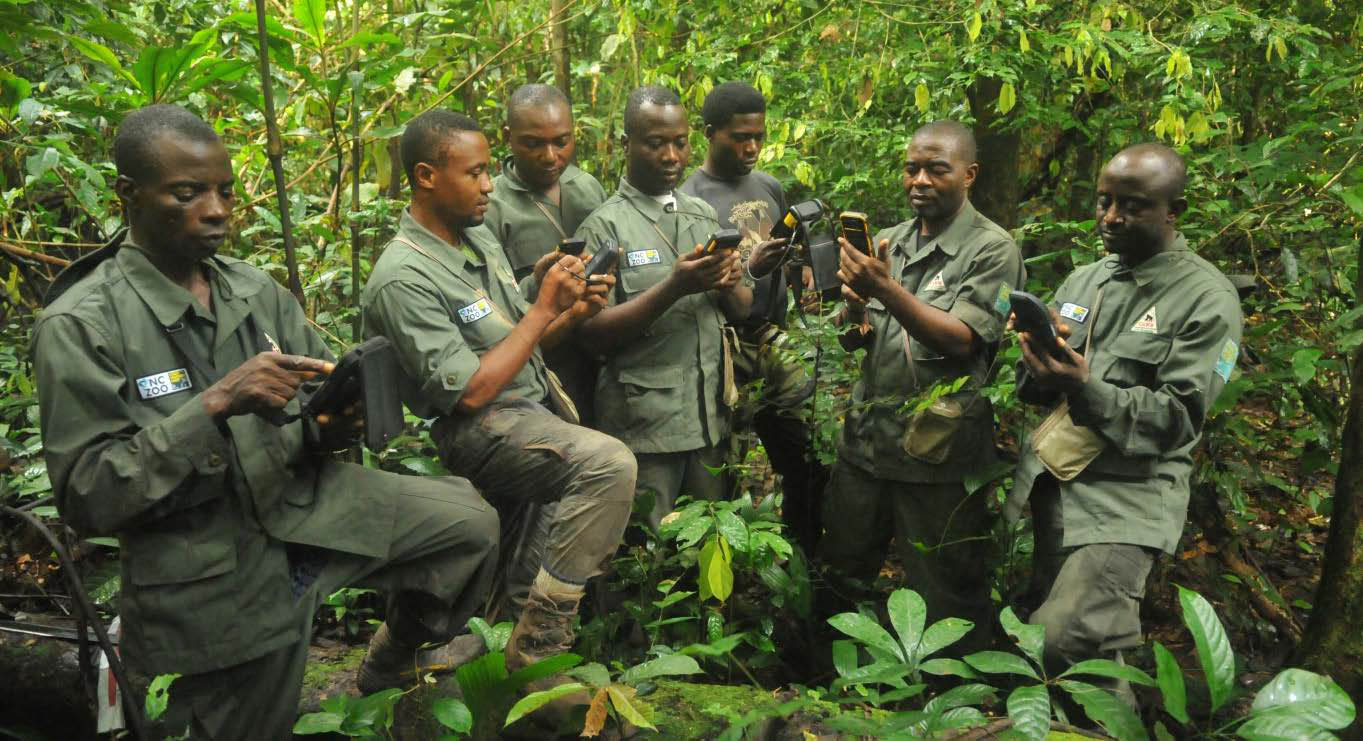
Meanwhile, in nearby Itombwe Nature Reserve, hopes are high that newly-installed cameras will manage to snap a wandering gorilla.
And it’s not just cameras that are giving rangers the edge. The Gorilla Organization’s teams have recently been trained in SMART (Spatial Monitoring and Reporting Tool). This allows them to compile the data they collect during their gorilla monitoring patrols and share it with fellow conservationists, not just in Africa but right around the world.
Internationally standardized data means clearer insights and more opportunities to share knowledge and best practice. So far, rangers from Itombwe and Kisimbe-Ikobo, Maiko and Walikale reserves have taken the training, giving them cutting-edge expertise to go alongside their savvy knowhow of the forests and that vital advantage over the poachers who mean gorillas harm.
This story has been reprinted from Digit News Summer 2024. To download the full issue please click here.

Recently, a bizarre question took hold of social media: Could 100 men take on a gorilla in a fight? What…

On 27 April 2025, Sonam Modhwadia took on the legendary TCS London Marathon, running every mile with purpose, in support…

A surge in Mpox cases across the Democratic Republic of the Congo has triggered an urgent conservation response to protect…